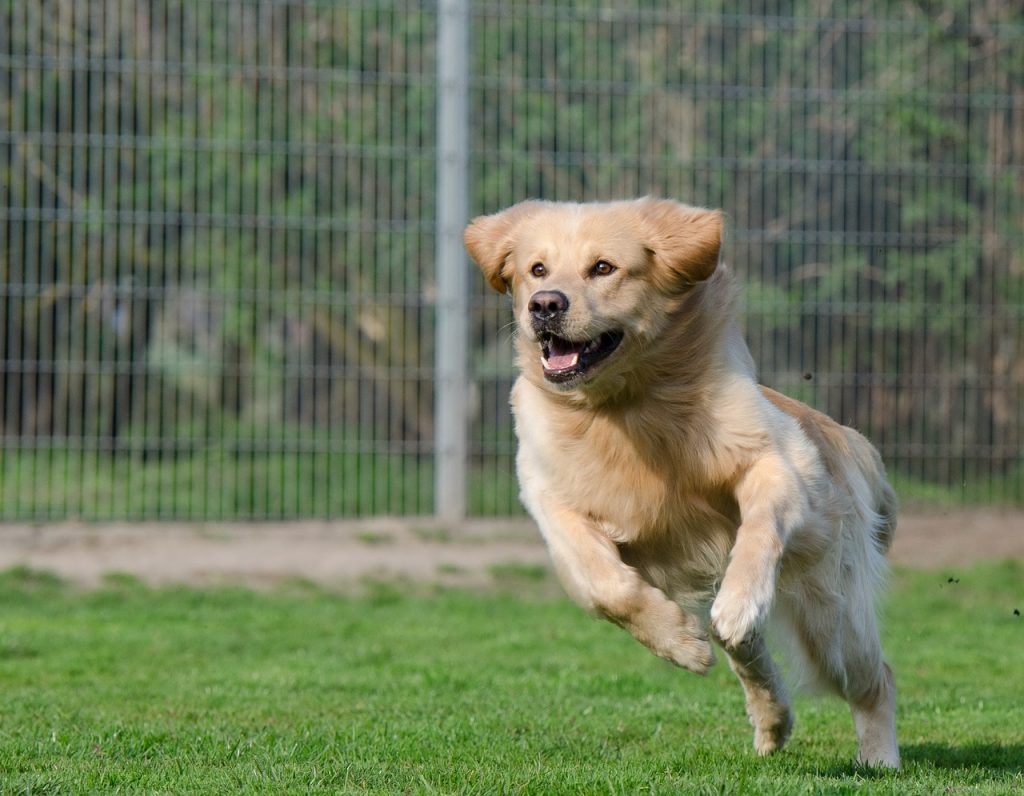A Second Chance: Rehabilitating And Training Shelter Dogs For A New Life

Imagine a world where shelter dogs are not seen as discarded animals, but as beings full of potential for a new lease on life. In the heartwarming article, “A Second Chance: Rehabilitating and Training Shelter Dogs for a New Life,” you will discover the incredible journey these dogs undertake as they receive the care and training they need to become loving, obedient companions. From rehabilitation programs that heal emotional scars to in-depth training sessions that unlock each dog’s unique talents, this article explores the remarkable transformations that occur when compassion and dedication intersect. Get ready to be inspired by stories of resilience and hope as these four-legged friends embrace their second chance and find their forever homes.

The Importance of Second Chances
Rehabilitating and Training Shelter Dogs
Shelter dogs often come from difficult backgrounds and may have experienced trauma or neglect. They may exhibit behavioral issues, fearfulness, or aggression due to their past experiences. However, with the right rehabilitation and training, these dogs can find a new lease on life. Second chance programs play a vital role in rehabilitating and training shelter dogs, providing them with the opportunity to overcome their challenges and find their forever homes.
Benefits of Second Chance Programs for Shelter Dogs
Second chance programs offer a range of benefits for shelter dogs. Through rehabilitation and training, these programs help to address common issues faced by shelter dogs, both physically and emotionally. By teaching shelter dogs new behaviors and providing socialization opportunities, they can overcome fear and anxiety. These programs also prioritize the health and well-being of shelter dogs, ensuring they receive necessary veterinary care, physical rehabilitation, and appropriate nutrition. Additionally, second chance programs actively work towards finding shelter dogs loving and suitable forever homes, ensuring they can experience the love and companionship they deserve.
Understanding Shelter Dogs
Common Issues Faced by Shelter Dogs
Shelter dogs often exhibit various issues as a result of their previous experiences. Some common issues faced by these dogs include fear and anxiety, aggression, separation anxiety, and improper socialization. Many often struggle with trust and confidence, making it challenging for them to adapt to new environments or form bonds with humans. Understanding these issues is crucial in order to develop effective rehabilitation techniques and provide the necessary support for shelter dogs.
Physical and Emotional Trauma in Shelter Dogs
Physical and emotional trauma is not uncommon among shelter dogs. Abandoned, abused, or neglected, these dogs may have suffered at the hands of humans, leading to both physical and emotional scars. Physical trauma may include injuries, malnutrition, or disease. Emotional trauma can manifest as fear, anxiety, or aggression. By addressing these traumas and providing the necessary care, shelter dogs can heal both physically and emotionally, making them more ready for adoption.
Rehabilitation Techniques
Positive Reinforcement Training
Positive reinforcement training is a highly effective method used in the rehabilitation of shelter dogs. This technique focuses on rewarding desired behaviors rather than punishing undesirable ones. By utilizing treats, praise, and rewards, dogs learn to associate positive behaviors with positive outcomes. This type of training not only builds trust and confidence but also helps in correcting unwanted behaviors. Positive reinforcement training allows shelter dogs to learn and thrive in a safe and encouraging environment.
Behavioral Modification Methods
Behavioral modification methods are crucial in addressing and correcting behavioral issues in shelter dogs. These techniques focus on understanding the root causes of specific behaviors and working to modify or redirect them. Whether it is fear aggression, separation anxiety, or resource guarding, behavioral modification methods help shelter dogs learn new ways of responding to triggers and situations. By retraining their responses, these dogs can overcome their challenges and become more adoptable.
Socialization and Enrichment Activities
Socialization and enrichment activities are vital in helping shelter dogs develop positive relationships with humans and other animals. These activities expose the dogs to different experiences and environments, helping them overcome fears and become comfortable in various situations. Socialization and enrichment activities may include walks, playgroups, interaction with volunteers, and exposure to various sights and sounds. By providing these opportunities, shelter dogs can become well-rounded, sociable pets that are ready for their forever homes.
Building Trust and Confidence
Creating Safe and Secure Environments
Building trust and confidence in shelter dogs requires creating safe and secure environments for them to thrive in. This includes ensuring physical safety, providing a consistent routine, and offering a calm and predictable atmosphere. By addressing any potential stressors or triggers, such as loud noises or unfamiliar surroundings, shelter dogs can feel secure in their surroundings. Creating a safe environment helps to alleviate anxiety and allows dogs to focus on their rehabilitation and training.
Establishing a Bond with Shelter Dogs
Establishing a bond with shelter dogs is essential in gaining their trust and confidence. Building a relationship based on mutual respect and understanding helps dogs feel secure and loved. This bond is formed through consistent, positive interactions, spending quality time together, and providing care and attention. It is important to recognize that each dog may require different approaches to building trust and confidence. Patience, empathy, and a genuine desire to connect with the dog are key factors in establishing a strong bond.

Health and Wellness
Veterinary Care for Shelter Dogs
Providing proper veterinary care for shelter dogs is crucial for their overall health and well-being. When shelter dogs arrive, they often require medical attention, vaccinations, and spaying or neutering. Regular check-ups are necessary to monitor their health, address any underlying issues, and prevent the spread of diseases within the shelter. By ensuring their physical health, shelter dogs have a better chance of finding their forever homes.
Physical Rehabilitation and Exercise
Physical rehabilitation and exercise are important for the well-being of shelter dogs. Many may have suffered injuries or lack muscle tone from being confined for long periods. By engaging in physical activities, such as walks, runs, or playtime, shelter dogs can regain their strength and improve their overall fitness. Physical rehabilitation plans tailored to each dog’s needs can help them overcome physical limitations and gain the stamina required for their new lives.
Nutrition and Special Diets
Proper nutrition is vital in ensuring the health and vitality of shelter dogs. Many shelter dogs arrive malnourished or with dietary restrictions due to allergies or medical conditions. Providing balanced meals and appropriate diets is essential for their recovery and development. Collaborating with veterinarians or animal nutritionists can help determine the best nutritional plans for each dog’s specific needs. A well-balanced diet supports their overall health, enhances their energy levels, and improves their chances of finding a forever home.
Finding Forever Homes
Matching a Shelter Dog with the Right Owner
Finding the perfect forever home for a shelter dog requires careful consideration and matching. Understanding the unique qualities, behaviors, and needs of each shelter dog is important in finding an owner who can provide a suitable environment. Factors such as the owner’s experience, lifestyle, and compatibility with the dog’s temperament are taken into account. By ensuring a proper match, the likelihood of a successful adoption and a happy future for both the dog and owner increases significantly.
Adoption Process and Requirements
The adoption process for shelter dogs varies depending on the organization. It typically involves an application, interview, home visit, and a potential meet-and-greet with the dog. Requirements may include providing references, proof of residence, and agreement to follow specific adoption guidelines. These guidelines are designed to ensure the well-being and long-term care of the dog. By thoroughly screening potential adopters, shelters can ensure the best possible outcome for both the dog and the new owner.
Follow-up Support for Adopters
Follow-up support for adopters is crucial to ensure the successful integration of the shelter dog into their new home. Many shelters provide post-adoption support in the form of training resources, advice, and counseling. This support helps adopters navigate any challenges that may arise and provides guidance on building a strong bond with their new companion. By offering ongoing support, shelters can ensure the long-term happiness and well-being of both the dog and the adopter.

Success Stories
Stories of Shelter Dogs Finding New Lives
Countless success stories showcase the transformation of shelter dogs into beloved family members. These stories highlight the resilience and capacity for love that shelter dogs possess. From overcoming fears and anxiety to becoming therapy dogs or service animals, shelter dogs continue to prove their worth and potential. Each success story resonates with hope and inspires others to consider adoption and provide a second chance to shelter dogs in need.
Impact of Second Chance Programs on Shelter Dogs
Second chance programs have a profound impact on the lives of shelter dogs. By providing them with the necessary rehabilitation, training, and support, these programs give shelter dogs hope for a brighter future. Second chance programs not only help address behavioral and health issues but also empower dogs to overcome their past traumas and find loving homes. Through these programs, shelter dogs are given the opportunity to live fulfilling lives, becoming cherished members of their new families.
Community Involvement
Volunteer Opportunities in Shelter Dog Rehabilitation
Community involvement plays a vital role in the rehabilitation and training of shelter dogs. Volunteers can assist with various activities, including socialization, training, exercise, and grooming. Their involvement helps provide shelter dogs with the necessary attention, care, and love they need to thrive. Volunteer opportunities in shelter dog rehabilitation not only benefit the dogs but also allow individuals to make a positive impact and contribute to their community.
Educating the Public on Rescue and Adoption
Educating the public on rescue and adoption is essential in dispelling myths and promoting the benefits of giving shelter dogs a second chance. Public education programs can help raise awareness about the realities of shelter dogs and the joy they can bring to their adoptive families. By addressing common misconceptions, such as the belief that shelter dogs are “damaged” or unruly, the public can gain a better understanding of these animals and consider adoption as a compassionate choice.
Overcoming Challenges
Limited Resources and Funding
One of the major challenges faced by organizations working with shelter dogs is limited resources and funding. Providing adequate care, rehabilitation, and training requires financial support and access to necessary resources. Many organizations rely on donations and grants to ensure the continuation of their programs. Collaboration with local communities, businesses, and individuals plays a crucial role in overcoming these challenges and providing shelter dogs with the care they need.
Addressing Stigma towards Shelter Dogs
Addressing the stigma associated with shelter dogs is important in changing public perception and encouraging adoption. Contrary to popular belief, shelter dogs are not inherently flawed or dangerous. Their challenging behavior often stems from past experiences and can be resolved through rehabilitation and training. By highlighting success stories, promoting awareness, and educating the public, the stigma surrounding shelter dogs can be replaced with understanding and empathy.
Continued Advocacy
Promoting Second Chance Programs
Continued advocacy is essential in promoting second chance programs and their benefits for shelter dogs. By raising awareness about the positive impact of these programs, more individuals are encouraged to support them through donations, volunteering, or considering adoption. Promoting second chance programs also helps in dispelling myths and misconceptions about shelter dogs, ultimately leading to increased adoption rates and more fulfilling lives for these deserving animals.
Supporting Shelter Dog Organizations and Initiatives
Supporting shelter dog organizations and initiatives is another crucial form of advocacy. Whether through monetary contributions, volunteering, or spreading awareness, supporting these organizations provides crucial resources needed for the rehabilitation, care, and rehoming of shelter dogs. By standing behind these initiatives, individuals can play an active role in improving the lives of shelter dogs and helping them find the loving homes they deserve.